What are Advergames?
Video games are interactive by nature. They deliver a complex, dynamic system based on a set of rules to players, who act and make decisions based on the mechanics established in the game design.
And you may have noticed that within the games there are many advertisements for famous brands, they’re there to compose the scenario, part of the story or simply to be the star of the game, and this is called advergaming, which is the practice of using video games to advertise a product or service. The term was created by Anthony Giallourakis in 2000 and used for the first time in Wired magazine in 2001. He referred to electronic games that advertise a product, organization or brand.
Advergames can be games entirely made around themes related to a product, or they can be something a little more subtle, such as billboards, stores, clothes, parts, cars, etc. All this to draw your attention to the brand!
Today, we bring you games that were made exclusively to promote specific brands in the world of video games.
How did Advergames become a thing?
In the 1980s, some companies released games for Atari as a way of advertising their brands. The games came as a gift when we bought a specific product from that company. These cartridges were made in limited quantities, and today they’re rare, and anyone who has one of these could have a small fortune stored at home.
Chase The Chuck Wagon
Everyone who has a pet at home needs to buy food for their cat, and with that in mind, Purina created Chase The Chuck Wagon.
This promotional game could only be purchased by Purina pet food consumers. That's because to get the cartridge, it was necessary to send proof of purchase of the product by mail and the company would send the cartridge as a gift.
Produced by Spectravideo and created by Mike Schwartz, Chase the Chuck Wagon was made in three days. The creator says he used the code and sound effects from his first game (Artillery Duel).
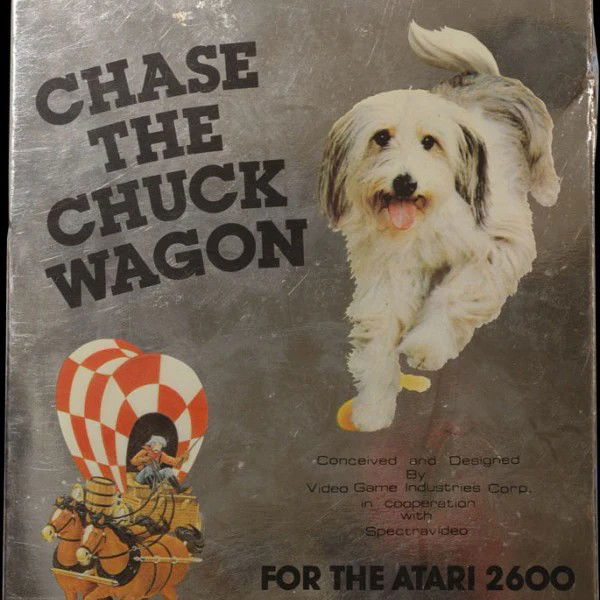
Chase the Chuck Wagon takes place in a maze where the player controls the dog Chuckie. The goal is to get him to the opening at the top of the screen within a certain amount of time, avoiding the obstacles he encounters along the way. By doing so, the dog is taken to the reward screen, where he wins a bowl of food and extra points.
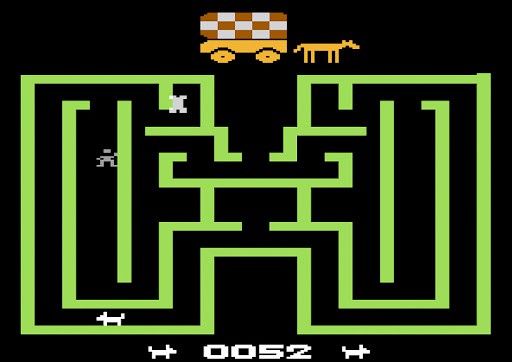
Even though it was used as a form of marketing, the campaign was not very successful considering that several leftover cartridges had to be destroyed.
Pepsi Invaders
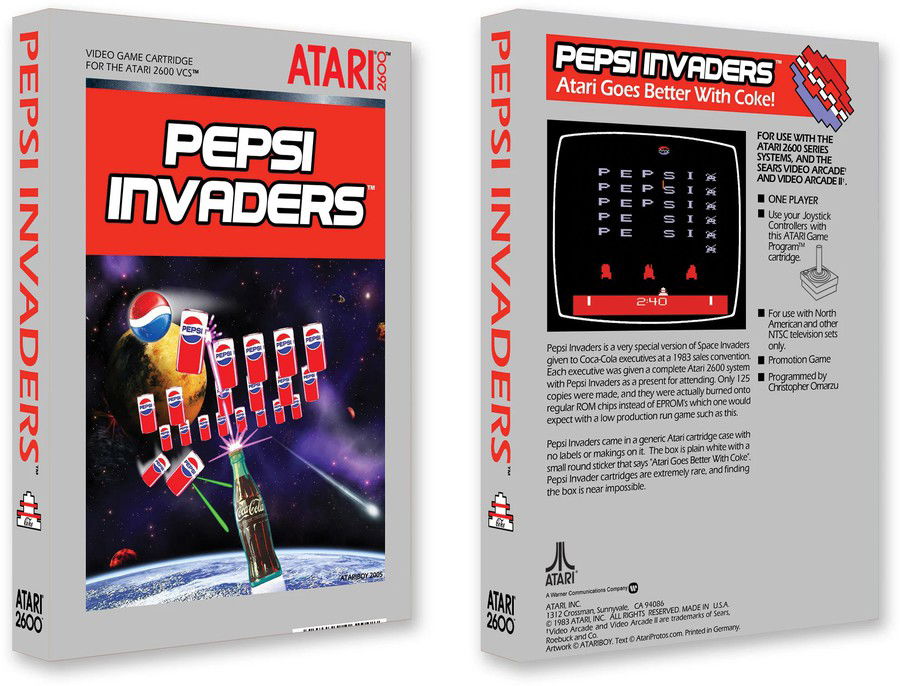
The rivalry between Coca-Cola and Pepsi in the 80’s was fierce. The companies did everything they could to attract the public's attention to their products, and this wasn't just with consumers. Great advertisements emerged, some of them very classic and nostalgic. Remember the Santa Claus commercials? It’s likely that you still picture a red can of Coke in your mind when you see a polar bear on your TV.
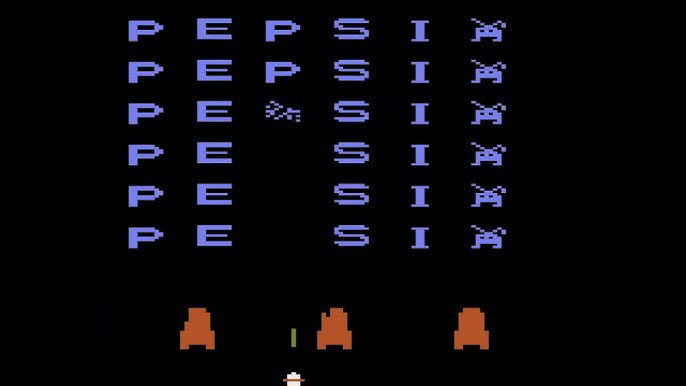
With this in mind, the Coca-Cola Company commissioned a game for Atari to be given to salespeople at its 1983 sales convention. Pepsi Invaders is a version of Space Invaders, in which the player shoots at a flying formation of letters spelling out "PEPSI", its longtime rival. The game was not sold commercially, and only 125 copies of the game were made and distributed.
Kool-Aid Man
Remember Kool-Aid?
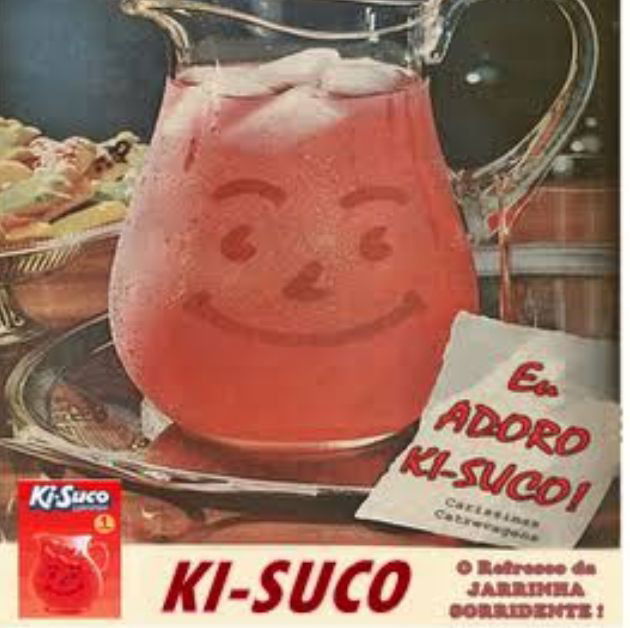
Kool-Aid was invented by Edwin Perkins in Hastings, Nebraska. All of his experiments took place in his mother's kitchen. Its predecessor was a liquid concentrate called Fruit Smack. To reduce shipping costs, in 1927 Perkins discovered a way to remove the liquid from Fruit Smack, leaving only a powder; this powder was called Kool-Aid.
Perkins moved production to Chicago in 1931, and Kool-Aid was sold to General Foods in 1953. Hastings still holds an annual summer festival called Kool-Aid Days on the second weekend in August, in honor of the city's fame due to the product. Kool-Aid is known as the official soft drink of Nebraska.
Another promotional cartridge that was initially available only to purchasers but was later sold in stores was the Kool-Aid Man.
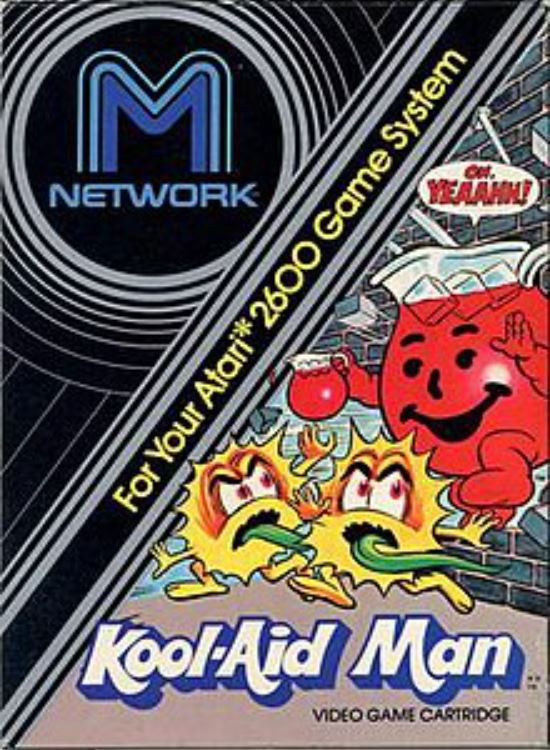
The game takes place in a pool of juice - yes, juice - from which your enemies are using straws to drink. Your goal is to stop Kool-Aid Man from emptying the pool. If your opponents are moving, run away, because if you hit one of them, you temporarily lose control. There are power-ups that pass through the screen to make you immune for a while.
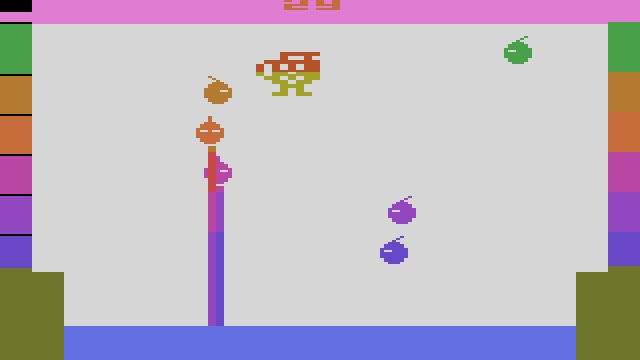
The cartridge was made by Mattel in 1983 and also released for Intellivision with an entirely different look and design.
Tooth Protectors
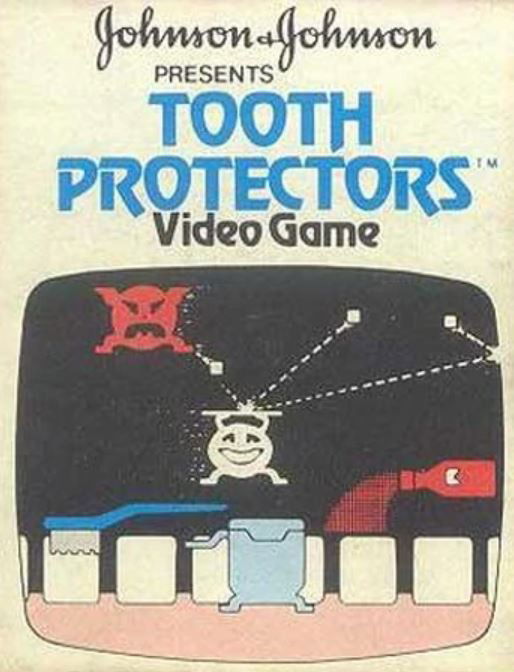
And after drinking soda and juice, you need to brush your teeth. With this in mind, Johnson & Johnson launched Tooth Protectors. The game also followed the idea of receiving cartridges when sending in your proof of purchase of the company's products through the mail.
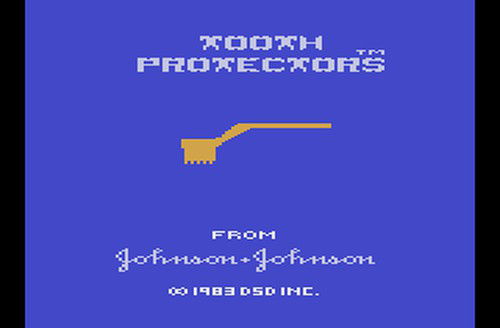
The goal of the game is to protect your teeth from an attack with food scraps thrown by the opponent at the top of the screen. If you fail, your teeth will start to flash until they disappear. If your teeth become too deteriorated, the player can request a complete cleaning with brushing, flossing and fluoride.
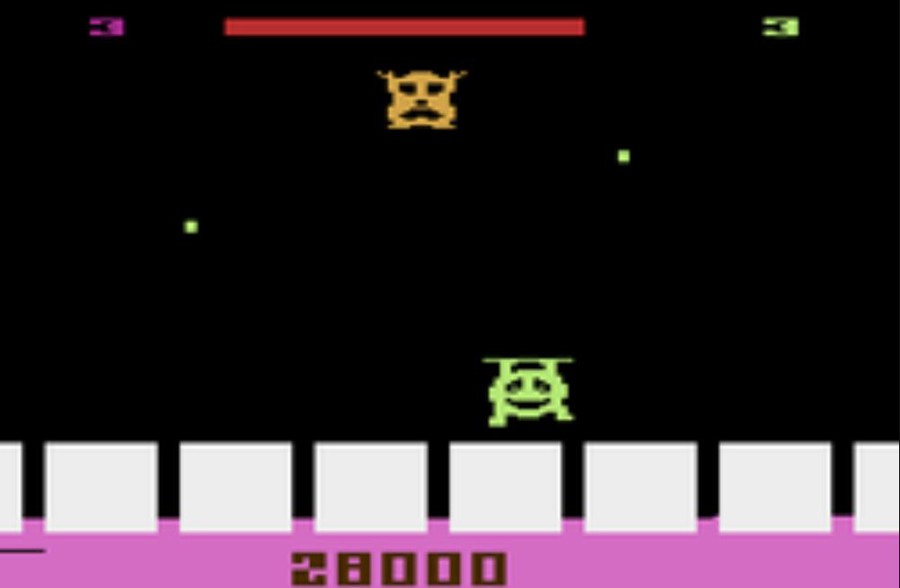
The game is fun and well-made, and stands out for its animated opening with Johnson & Johnson products passing across the screen.
Chex Quest
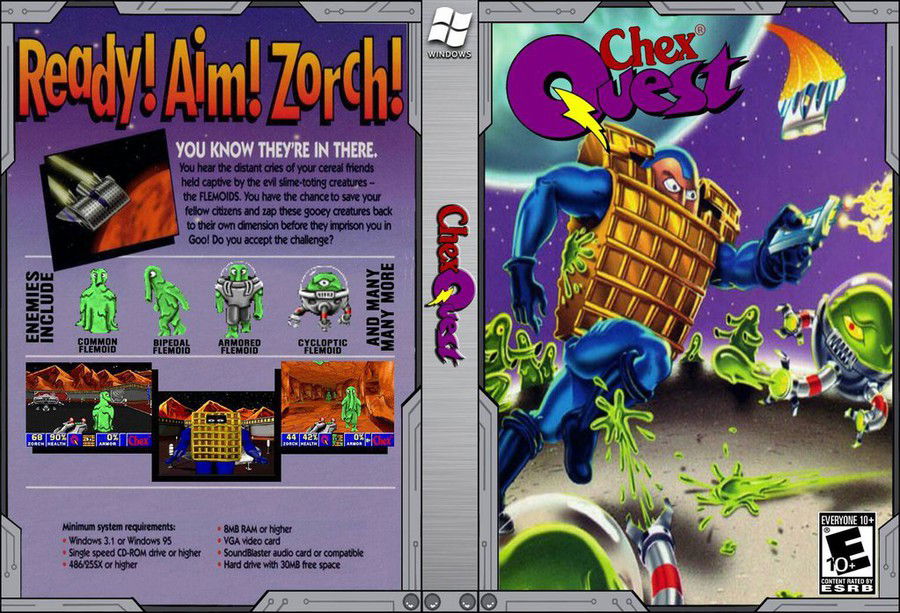
In 1996, Digital Café created a version of DOOM known as Chex Quest. The game was developed as a promotion for Chex cereal and aimed at children ages 6 to 9 or older. It’s specifically a conversion of the Ultimate Doom version.
Chex Quest won the Golden EFFIE Award for Advertising Effectiveness in 1996 and the Golden Reggie Award for Promotional Achievement in 1998. It’s known for being the first game included in cereal boxes as a prize.
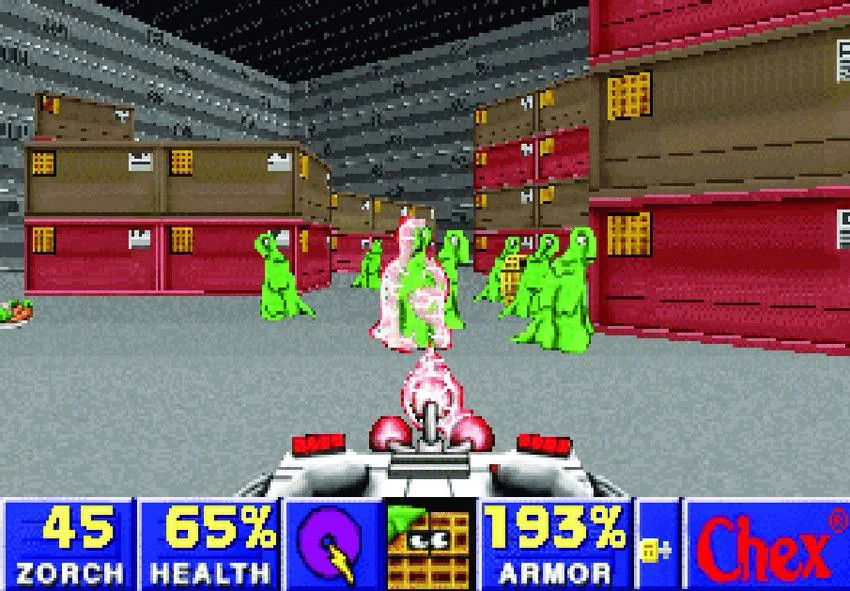
This move caused Chex cereal sales to increase by more than 200%. The game also has two more sequels.
Yo Noid!
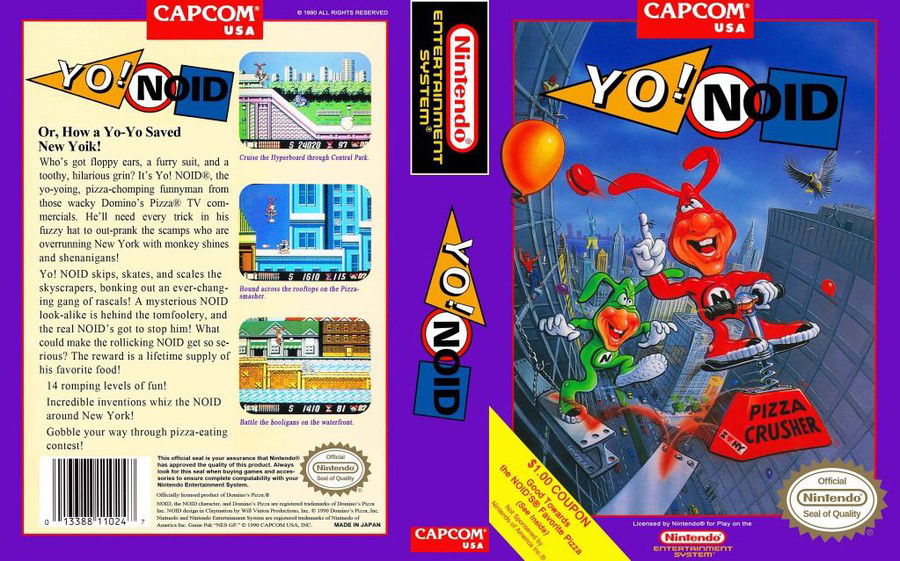
In 1960, Tom Monaghan and his brother, Jim, took over the operation of DomiNick's, a small chain of pizza restaurants in Michigan owned by Dominick DeVarti. The business was secured with a $500 down payment, and they then borrowed an additional $900 to pay for the store.
The brothers planned to split the hours equally, but Jim didn't want to give up his full-time job as a mailman to meet the demands of the new business. Within eight months, Jim traded his half of the business to Tom for the Volkswagen Beetle they used for pizza deliveries.
By 1965, Tom Monaghan had purchased two additional pizza restaurants; he now had a total of three locations in the same county. He wanted the stores to share the same brand, but the original owner forbade him from using the DomiNick's name. One day, an employee named Jim Kennedy returned from a pizza delivery and suggested the name "Domino's". Monaghan immediately loved the idea and officially renamed the business Domino's Pizza in 1965.
In 1986, a Domino's advertising agency created the character Noid and hired Will Vinton Studios to sketch and animate the character in commercials.
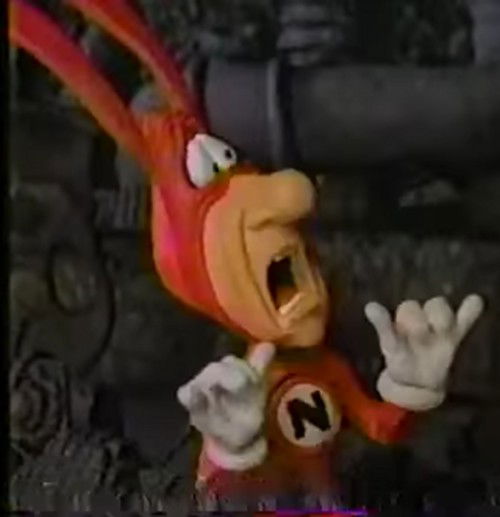
As early as 1988, a Saturday morning cartoon series, The Noids, aired on CBS, but the cartoon was canceled amid complaints that it was a publicity stunt and not a show for children.
As part of the publicity campaign, a computer game called Avoid the Noid was released in 1989. The objective of the game is to deliver a pizza within half an hour to a building full of Noids.
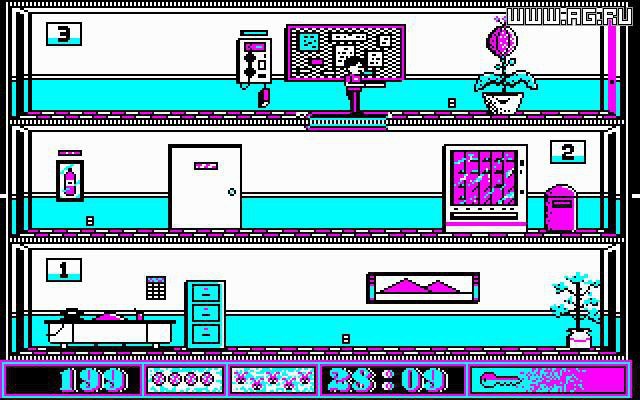
And in 1990, Yo! Noid! was released. The game is a remake of another game released in Japan as Kamen no Ninja Hanamaru, it’s a platform game developed by Now Production and published by Capcom for the Nintendo Entertainment System.
The game was first released in Japan on March 16th, 1990 and was localized in the United States to promote Noid, the Domino's mascot.
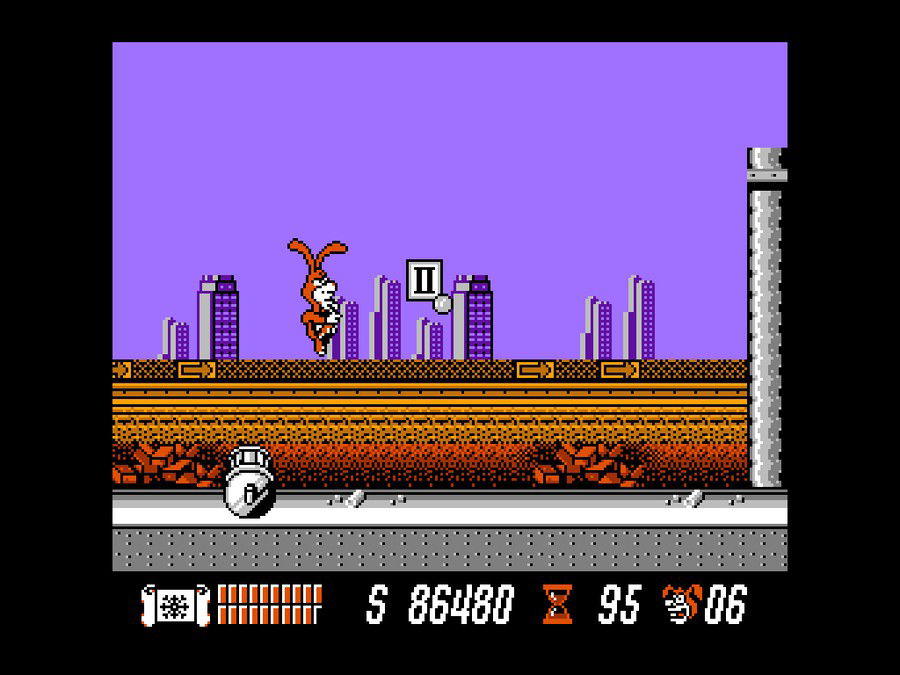
In the game, wild creatures led by Mr. Green are running wild in New York City. As they wreak havoc, the Mayor of New York decides to call on Noid to stop his evil doppelganger, save everyone, and give him a huge pizza reward.
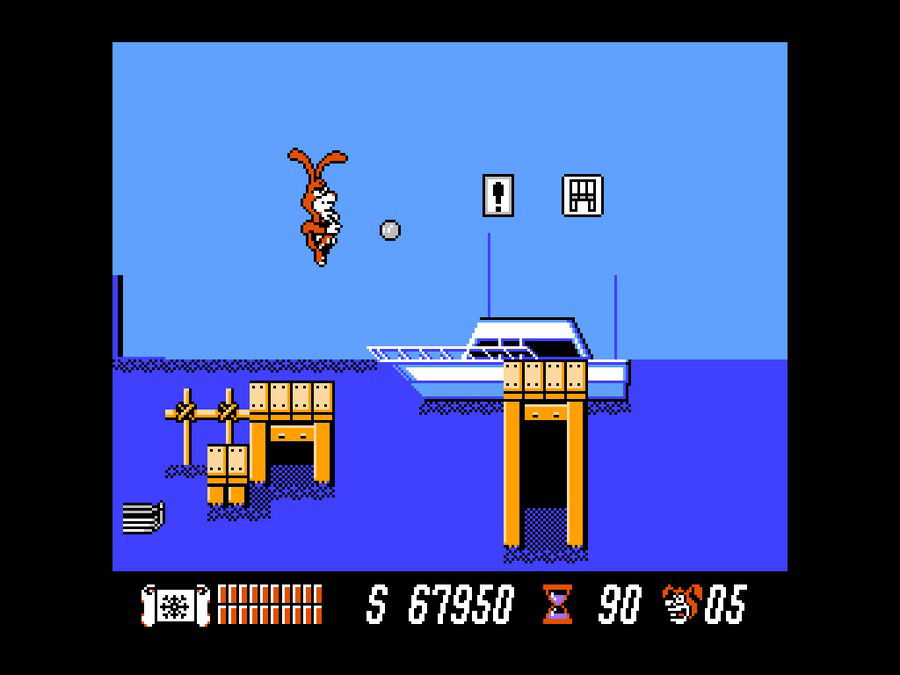
In August 2017, a fan-made sequel called Yo! Noid 2: Enter the Void was released. This game can be played on your PC for free.
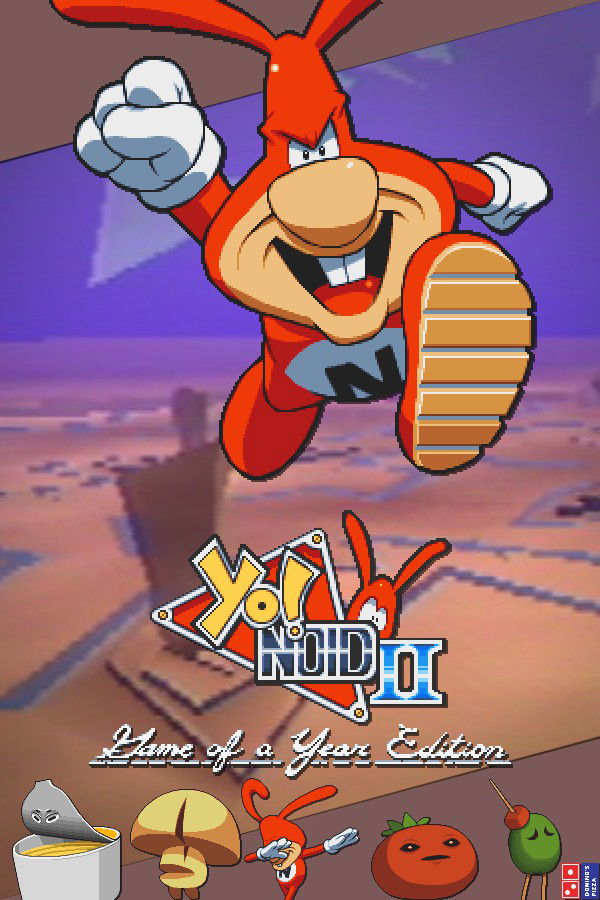
McDonald's Treasure Land Adventure
McDonald's Treasure Land Adventure is a platform game released in 1993. Developed by Treasure and published by Sega for the Sega Genesis.
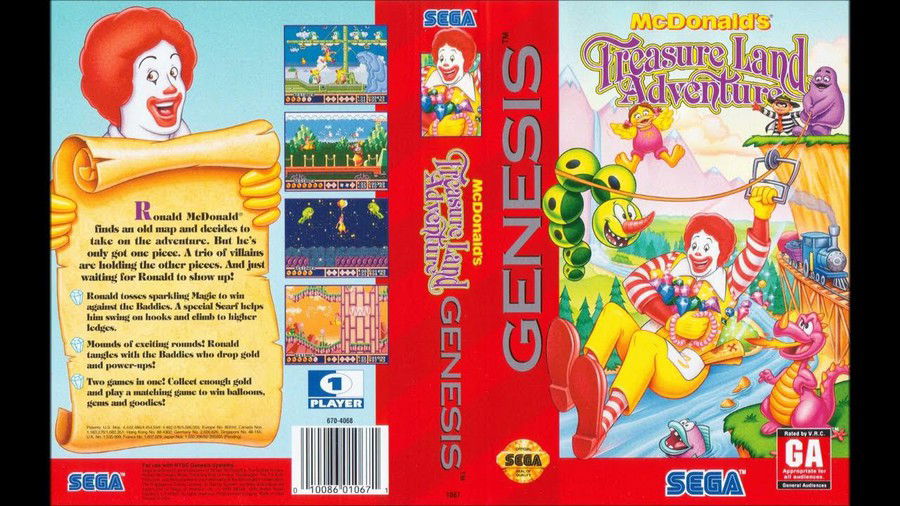
The player controls Ronald McDonald through the game's four worlds: Magical Forest, Magical Town, Magical Sea, and Magical Moon, each divided into three stages. Ronald can fire a magic attack to defeat enemies, and can use his scarf to attach hooks and reach higher platforms. Ronald's health is represented by red gems, and he will drop one when he’s hit by an enemy or falls into a pit.
Throughout the game, Ronald can collect bags of gold that can be used in shops found in certain levels. These shops sell various items, including additional gems, power-ups that increases the strength of his magic attack, and balloons that allow him to safely glide over enemies and obstacles.
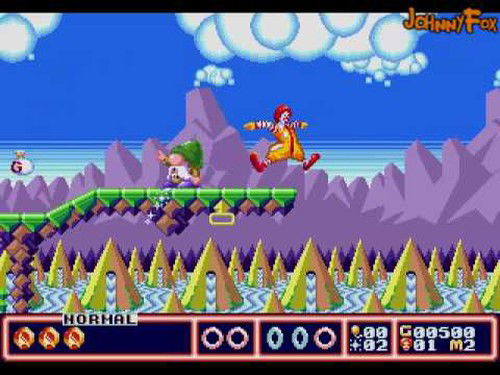
McDonald's Treasure Land Adventure was praised for its gameplay and graphical style, and is mentioned as one of the best licensed games of the era.
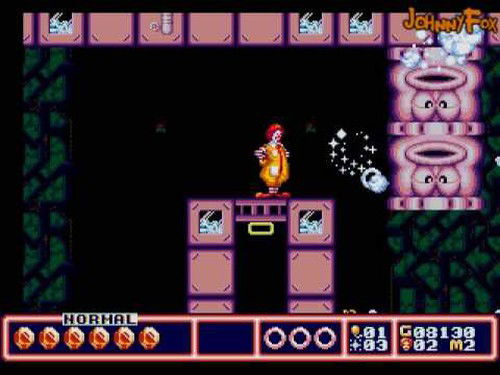
Chester Cheetah: Too Cool to Fool
Chester Cheetah: Too Cool to Fool is a game released in 1992 and starring the Cheetos mascot, Chester Cheetah.
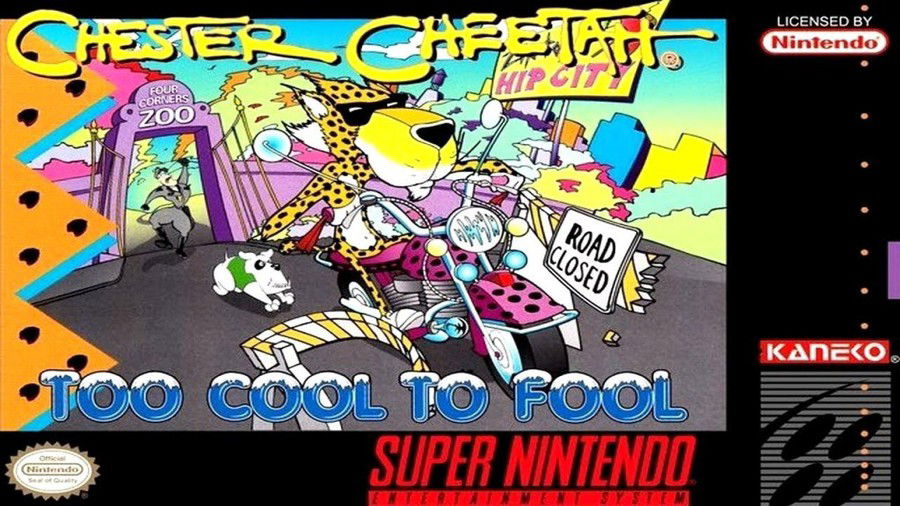
The game is made up of simple platform levels. Each level has a hidden part in a scooter stage. In the game, Chester can run and stun many enemies by jumping on their heads.
One interesting fact is that the instruction manual contains a slang vocabulary nicknamed Engrish, popular and recognized by many players. Engrish became a thing due to poor translations.
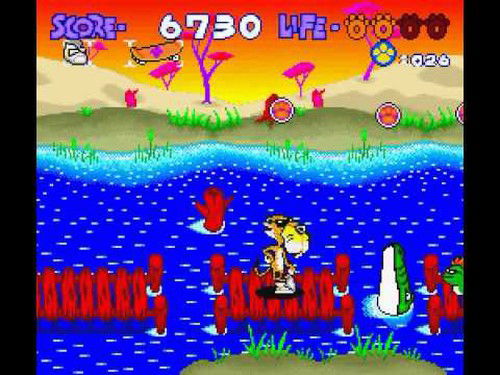
In the game, Chester Cheetah leaves his motorcycle parked while he’s taking a nap in a park. A police officer and his dog steal the motorcycle parts and go on the run. Your goal is to help Chester get his motorcycle parts back.
In 1993, the game gained a sequel, called Chester Cheetah: Wild Wild Quest.
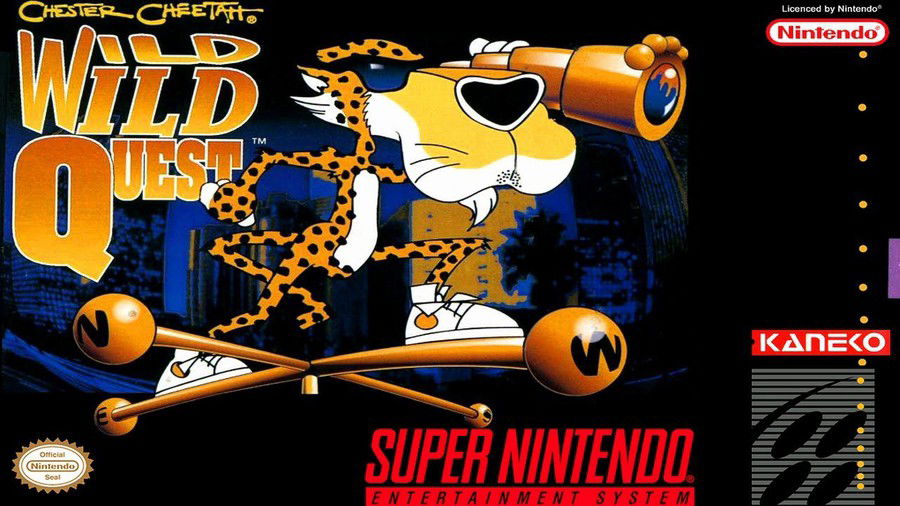
Cool Spot
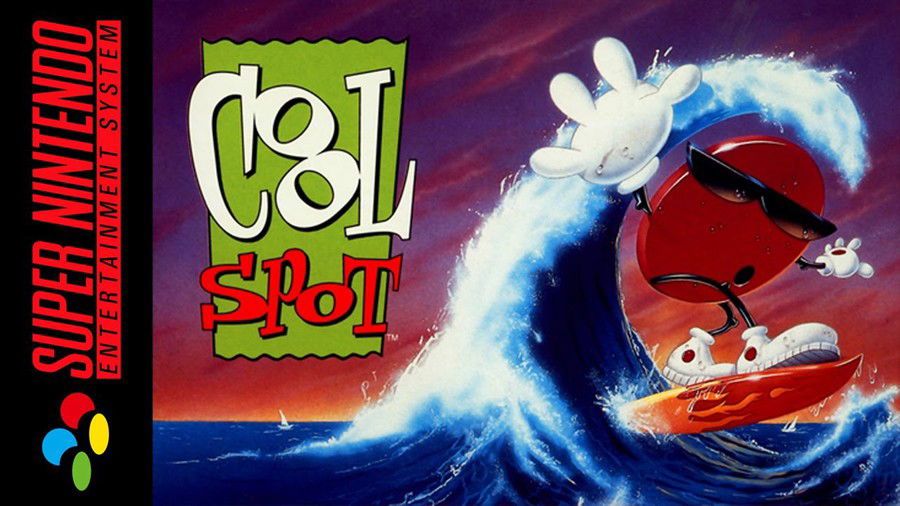
Cool Spot is a 1993 platform game developed by Virgin Games for multiple consoles. The title character, Cool Spot, is the mascot of the classic soft drink brand 7 Up.
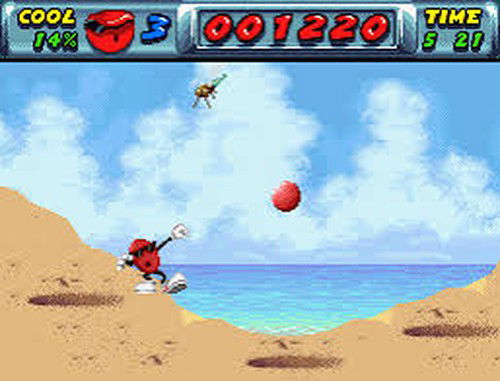
In the game, Cool Spot can jump and attack by shooting soda bubbles in any direction, and can also grab and climb various things by jumping in front of them. The cool thing is that the Bonus Stage takes place inside the soda and your goal is to free all the spots to save them.
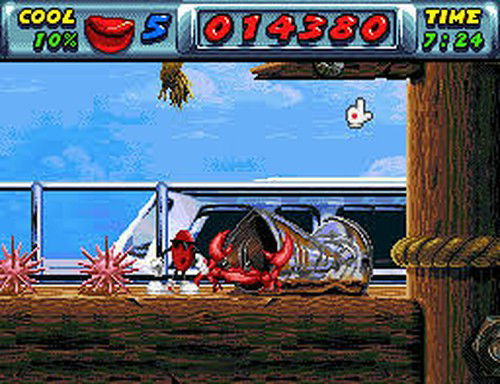
The game was praised for its smooth gameplay and graphics, as well as most of its soundtrack composed by Tommy Tallarico, which won awards.
Pepsiman
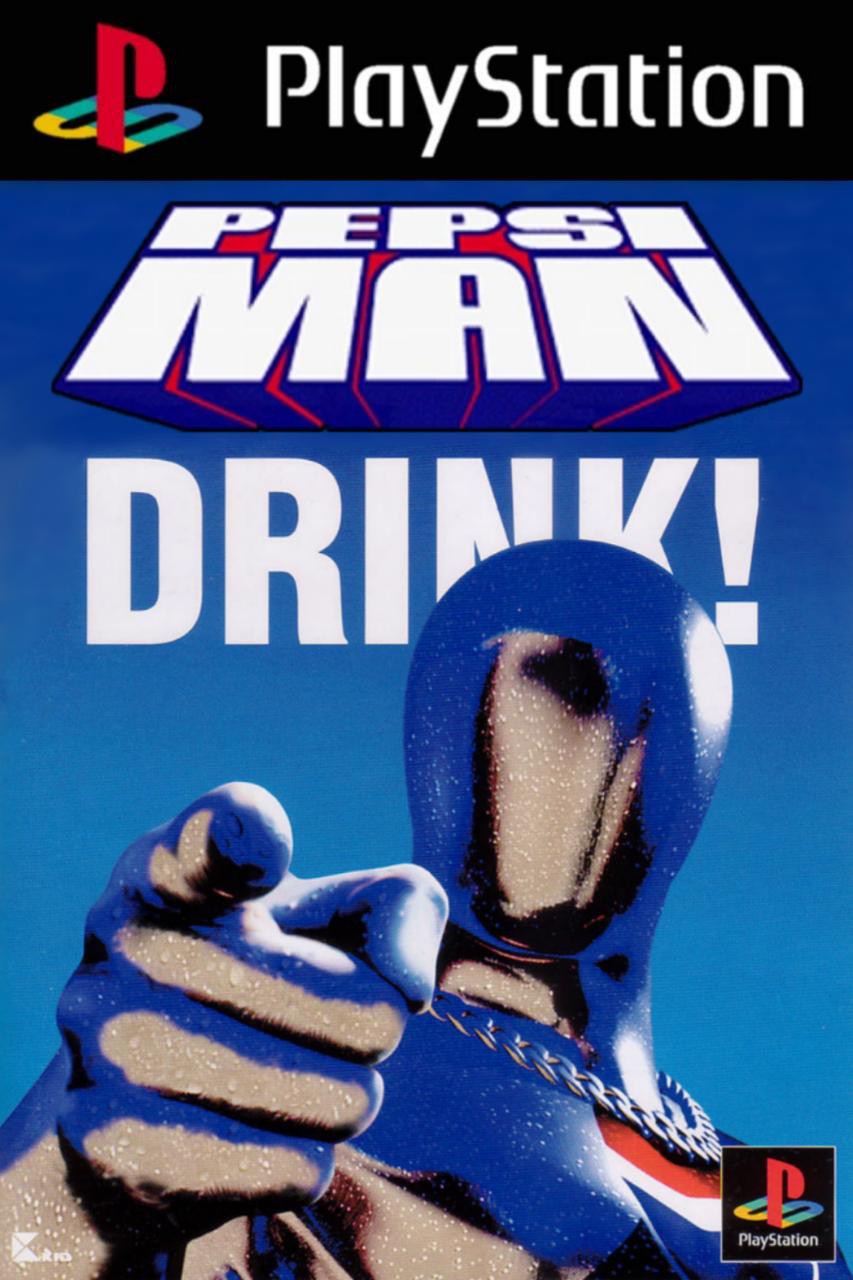
Japan is known for its quirks, from its hilarious TV shows to its famous superhero TV series and acclaimed anime industry. Pepsiman, one of these quirks, was only released there!
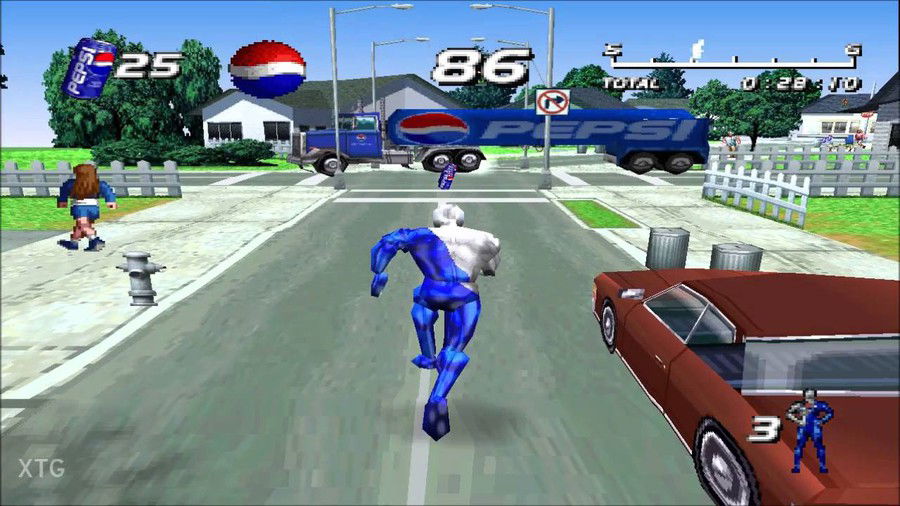
Pepsiman is an action game developed and published by KID for the PlayStation. It was released in Japan on March 4th, 1999, and is based on the Japanese superhero mascot for the soft drink Pepsi. The objective of the game is to avoid obstacles by running, shooting, and jumping, while Pepsiman automatically runs forward through each of the game's stages.
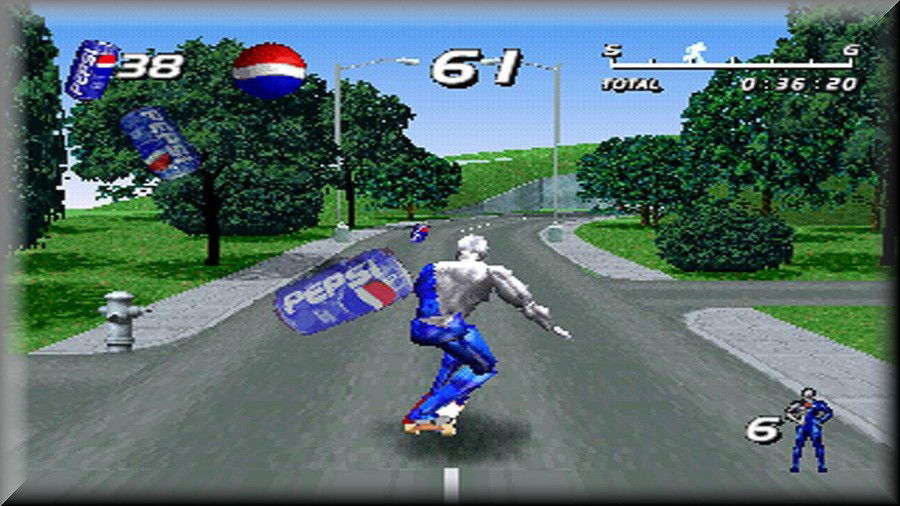
It was made on a low budget, which led to the decision to make cutscenes between stages, as they were cheap to produce and show a man drinking Pepsi. The game also features 3D cutscenes. Although a publisher sought to acquire the rights to publish it in the United States, it remained a Japan-exclusive game.
As Aventuras da TV Colosso
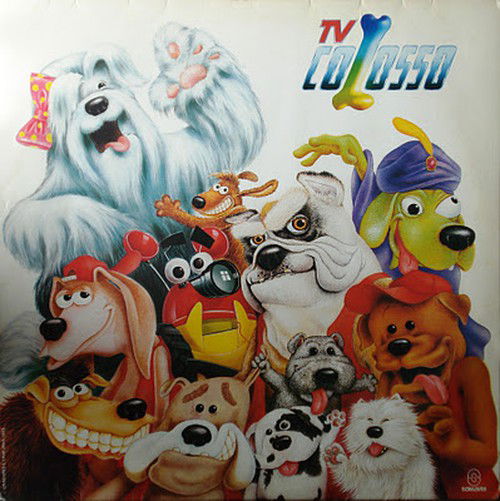
We have already ventured into several games to promote various brands, starting with pet food, juices, soft drinks, pizzas, hamburgers... Of course, after all this, I have to end with a classic Brazilian game!
And our story begins on Monday to Friday mornings with a TV show that many children at the time loved around there, TV Colosso.
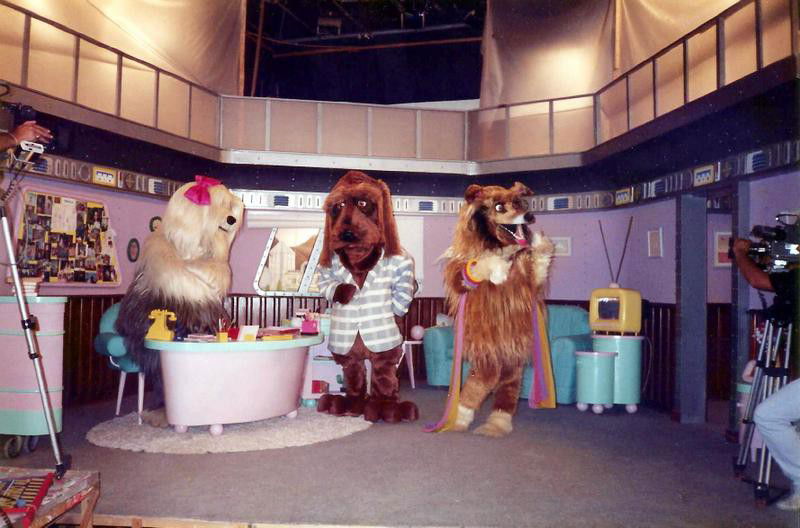
TV Colosso was a Brazilian children's show that replaced Show do Mallandro, another old Brazilian show, on mainstream channel TV Globo. The program aired between 1993 and 1997 and was about a TV show made only by dogs, with all the roles of a TV station, from the president to the office boy.
The main character was a sheepdog named Priscila; Borges was a bulldog who was the image director and worked in the programming control booth, from where he would call the cartoons that complemented TV Colosso's show time. On Saturdays, a summary of the week's highlights was shown.
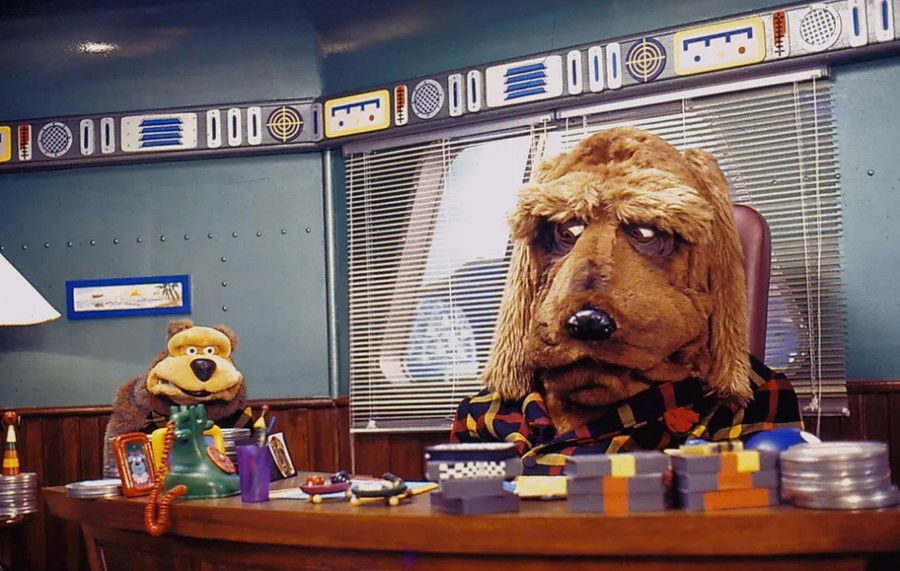
And the shows presented on TV Colosso were really cool because they were parodies of programs from TV Globo and other networks! People from outside of Brazil might read this and get confused, but it was a hit show that deserves to be mentioned.
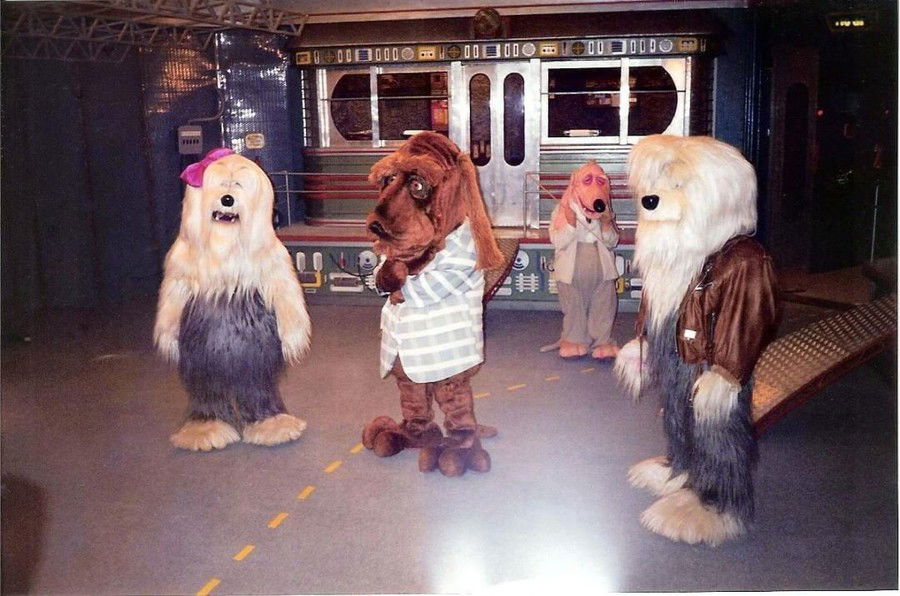
And with all this success, of course, there had to be a video game to promote the children's show.
Released in 1996 for the Sega Master System, As Aventuras da TV Colosso (The Adventures of TV Colosso) was an adaptation of the game Asterix and The Secret Mission made by TecToy, to promote the children's TV show.
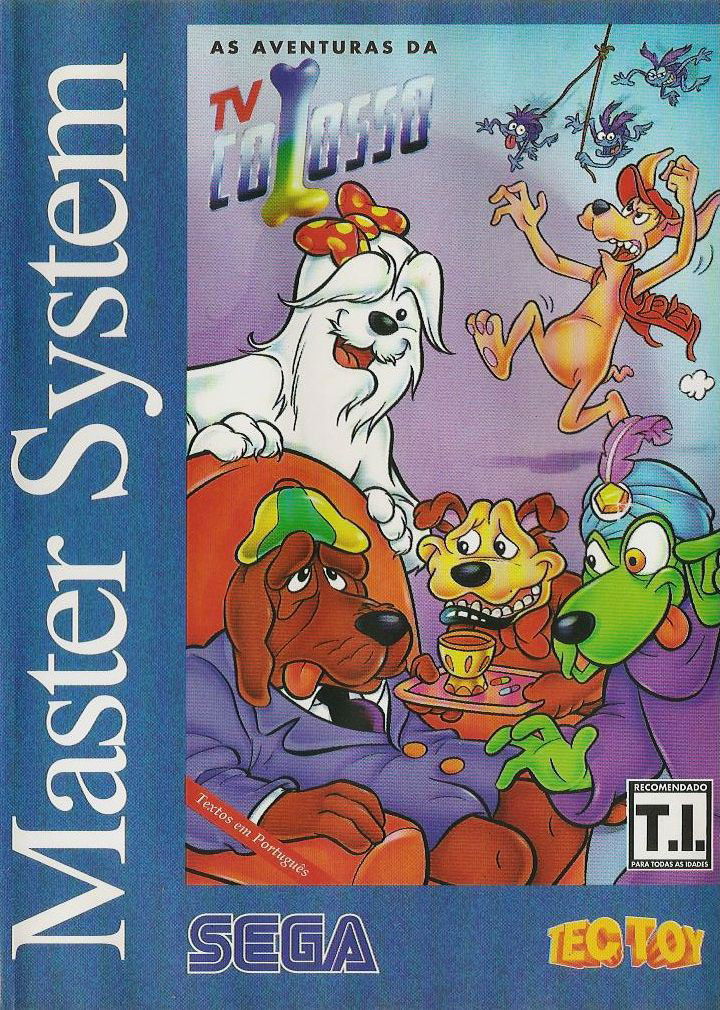
In the game, Chief J.F. falls ill and the doctor prescribes a combination of six types of extremely rare herbs to cure him. The herbs can only be found in nature; Capachão, his faithful sycophant, asks Priscila and one of the Gilmars to look for the plants. But the "flea community" hears the story and plans to stop them.
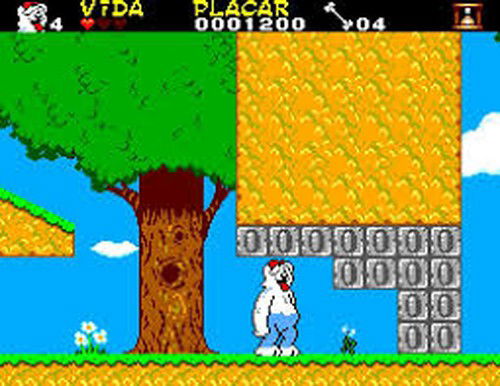
There are six stages full of challenges and dangers, with three "bosses" in total. Choosing Gilmar or Priscila in each stage is very important, since, due to the difference in their sizes, it becomes easier or harder to overcome the obstacles along the way.
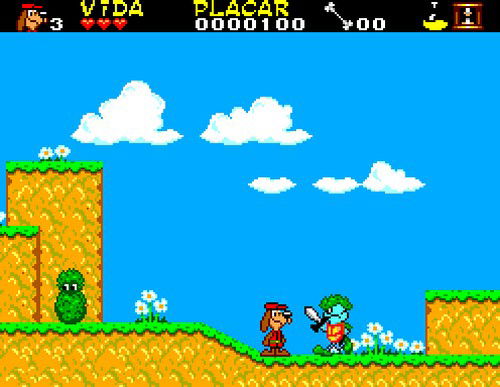
The adventure takes place in very different, detailed and colorful scenarios. Caves, boats, underground and disguised fleas along the way.
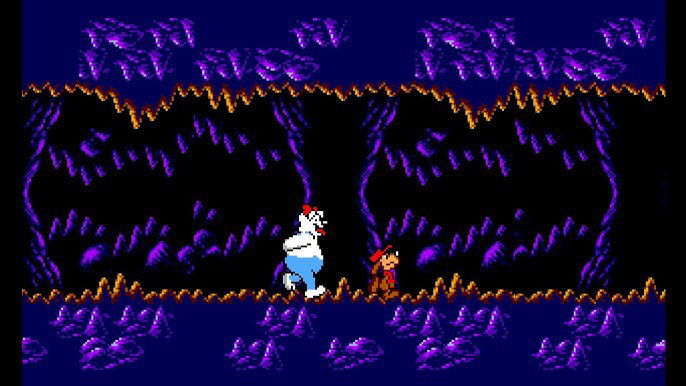
Considered to be a classic for SEGA's 8-bit console in Brazil, the TV Colosso game has two playable characters, excellent graphics, and is a very fun title.
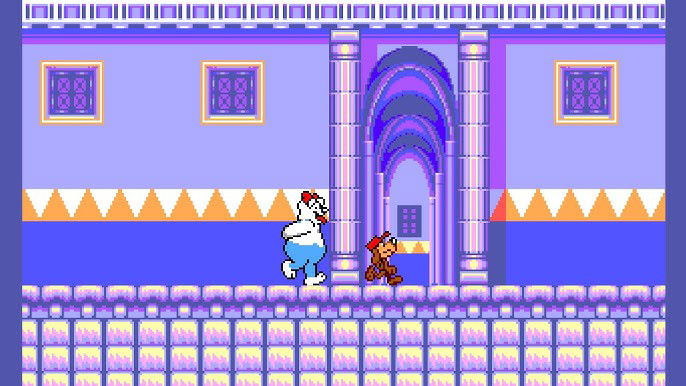
Conclusion
The purpose of this article is to trigger your nostalgia for games and show that within the video game industry there are several ways to sell branded products.









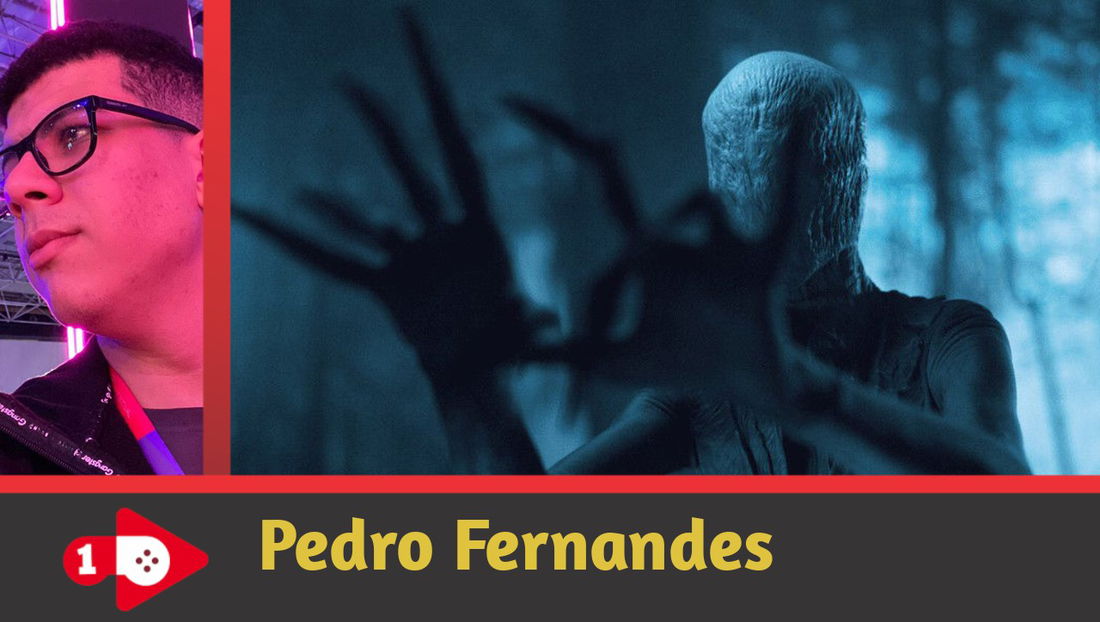
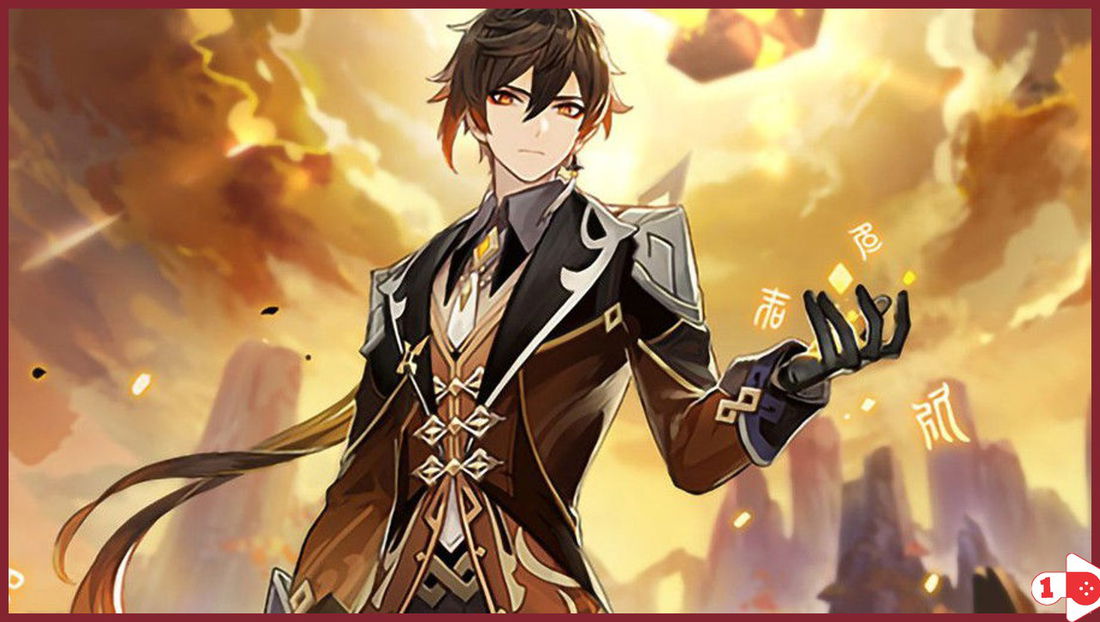



— 评论 0
, 反应 1
成为第一个发表评论的人